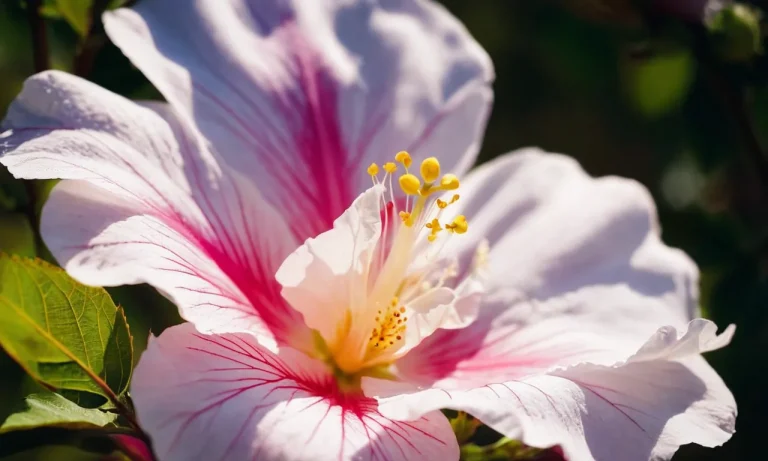Have you ever looked up at the night sky and seen a quick flash of light streak across the darkness? If so, congrats – you’ve just seen a shooting star! Seeing one of these fleeting celestial events can feel magical, almost like the universe is sending you a personal message.
If you’re short on time, here’s a quick answer to your question: Seeing a shooting star is often considered a sign of good luck and a time to make a wish. There are various folklore and superstitious beliefs around the world that assign different meanings to shooting stars.
In this comprehensive guide, we’ll explore the science behind shooting stars and meteors, the many cultural legends and meanings associated with seeing them, and tips for how to best spot these mesmerizing nighttime sights.
What Exactly Are Shooting Stars?
Shooting stars, also known as meteors, are fascinating celestial events that capture our imagination and wonder. But what exactly are shooting stars? Let’s delve into the science behind these mesmerizing streaks of light that grace our night sky.
The Science Behind Shooting Stars
Shooting stars are not actually stars at all, but rather small particles that enter the Earth’s atmosphere at high speeds. These particles, called meteoroids, are typically remnants of comets or asteroids. As they travel through space, they leave behind a trail of debris. When the Earth passes through this debris field, the meteoroids collide with our atmosphere and heat up, causing them to glow brightly. The resulting streak of light that we see is what we refer to as a shooting star.
As the meteoroid travels through the atmosphere, the intense heat and friction cause it to vaporize, resulting in the characteristic bright streak and sometimes even a fireball. The size of the meteoroid determines the intensity of the light and the length of the streak. Smaller meteoroids burn up quickly and create brief, fleeting streaks, while larger ones can produce more spectacular displays that may last for several seconds.
Meteors, Meteorites, and Meteor Showers
While the terms “meteor,” “meteorite,” and “meteor shower” are often used interchangeably, they actually refer to different aspects of this fascinating phenomenon.
Meteors are the streaks of light that we see when a meteoroid enters the Earth’s atmosphere and burns up. These are the shooting stars that we often make wishes upon.
Meteorites are the remnants of meteoroids that survive the journey through the atmosphere and land on the Earth’s surface. These can provide valuable insights into the composition of our solar system.
Meteor showers occur when the Earth passes through a debris field left behind by a comet or asteroid. This results in an increased number of meteors visible in the night sky. The most well-known meteor shower is the Perseids, which occurs every August and is caused by debris from the comet Swift-Tuttle.
Understanding the science behind shooting stars can deepen our appreciation for these breathtaking celestial displays. So, the next time you catch a glimpse of a shooting star, take a moment to marvel at the wonders of our universe.
Cultural Meanings and Legends About Shooting Stars
Shooting stars have captivated the human imagination for centuries, giving rise to various cultural meanings and legends. These celestial phenomena have sparked wonder and fascination across different cultures around the world. Let’s explore some of the most common cultural interpretations of shooting stars.
Wishing on Shooting Stars
One popular belief associated with shooting stars is the act of making a wish when you spot one streaking across the night sky. It is believed that if you make a wish while a shooting star is visible, your wish will come true. This tradition has been passed down through generations and is still upheld in many cultures today. So next time you see a shooting star, don’t forget to make a wish and hold onto that hope in your heart.
Shooting Stars Represent Spirituality and Good Fortune
In many spiritual beliefs, shooting stars are seen as a symbol of divine intervention or messages from the spiritual realm. Some cultures believe that shooting stars carry the energy of blessings and good fortune. They are considered as a sign that the universe is aligning in your favor and that positive changes are on the horizon. Embrace the beauty of a shooting star and let it remind you of the infinite possibilities that await you.
Shooting Stars as Omens and Signs
Throughout history, shooting stars have also been seen as omens and signs of significant events to come. In ancient times, people believed that the appearance of a shooting star could foretell a major event or even the birth or death of a prominent figure. While these beliefs may be rooted in superstition, they highlight the powerful impact that shooting stars have had on human imagination and our desire to find meaning in the celestial wonders above.
It is important to note that cultural interpretations of shooting stars may vary across different societies and regions. These meanings and legends add depth and richness to our understanding of these celestial phenomena, reminding us of the interconnectedness between the natural world and human culture.
How to See More Shooting Stars
Seeing a shooting star can be a magical experience that leaves us in awe of the universe. If you’re eager to spot more of these celestial wonders, here are some tips to help you increase your chances:
Find Optimal Viewing Conditions
Choosing the right location and time can greatly enhance your shooting star sighting opportunities. To maximize your chances:
- Find a spot away from city lights, as light pollution can obstruct your view of the night sky. Head to a nearby park or a remote area where the stars shine brightly.
- Check the weather forecast and choose a clear night with minimal cloud cover. Clouds can obscure your view, so it’s best to pick a night with clear skies.
- Plan your stargazing session during the darkest hours of the night, typically a few hours after midnight. This is when the sky is at its darkest and the stars are most visible.
Look for Major Meteor Showers
One of the best times to spot shooting stars is during meteor showers. These events occur when the Earth passes through a trail of debris left behind by a comet or asteroid. Here are some popular meteor showers to mark on your calendar:
- The Perseids: This annual meteor shower occurs in August and is known for its bright and numerous meteors.
- The Geminids: Happening in December, the Geminids are one of the most active meteor showers, producing up to 120 meteors per hour.
- The Leonids: This shower takes place in November and can produce stunning displays of shooting stars.
During meteor showers, shooting star sightings are more frequent, making it an ideal time to go stargazing. Remember to check the peak dates and times for each meteor shower to increase your chances of witnessing this cosmic spectacle.
Use Tech Tools to Enhance Your Shooting Star Viewing
Technology can be a valuable asset when it comes to stargazing and spotting shooting stars. Here are some tech tools that can enhance your experience:
- Mobile Apps: There are numerous stargazing apps available that can help you identify constellations, locate shooting stars, and even set reminders for upcoming meteor showers. Apps like SkyView, Star Walk, and Night Sky are popular choices.
- Telescopes and Binoculars: While shooting stars can be seen with the naked eye, using a telescope or binoculars can bring you closer to the action. These tools can enhance your view and allow you to see more details.
Remember to familiarize yourself with the instructions and settings of any tech tools you use to ensure you get the most out of your shooting star viewing experience.
By following these tips and utilizing the right tools, you’ll increase your chances of witnessing the breathtaking beauty of shooting stars. So, grab a blanket, head to a suitable location, and get ready for an awe-inspiring celestial show!
Shooting Star Superstitions and Beliefs Around the World
Throughout history, shooting stars have captivated the human imagination, giving rise to various superstitions and beliefs. Let’s explore some of the fascinating cultural interpretations of shooting stars from around the world.
European Folklore About Shooting Stars
In European folklore, shooting stars were often associated with significant events or messages from the heavens. It was believed that making a wish upon a shooting star would make it come true. This tradition is still popular today, with people eagerly awaiting the opportunity to make their wishes when they spot a shooting star streaking across the night sky. European cultures also saw shooting stars as omens of good luck and prosperity, believing that they brought blessings and positive energy.
Shooting Stars in Native American Culture
Native American tribes have their own unique interpretations of shooting stars. For some tribes, shooting stars were seen as the souls of departed loved ones, streaking across the sky to guide them to the afterlife. Others believed that shooting stars were messages from the gods, symbolizing important events or warnings. These beliefs varied among different tribes, highlighting the rich diversity in Native American cultures and their deep connection to the natural world.
Asian Legends and Myths About Shooting Stars
In Asian cultures, shooting stars are often associated with love and romance. In Japan, for example, it is believed that if two people see a shooting star at the same time, they are destined to be together. This belief has given rise to the popular tradition of couples visiting scenic spots to watch shooting stars together. In Chinese mythology, shooting stars are seen as celestial maidens descending to Earth. Their appearance is thought to bring joy and happiness to those who witness them.
These are just a few examples of the rich tapestry of superstitions and beliefs surrounding shooting stars. Whether you view them as messages from the heavens, symbols of love, or simply natural phenomena to be admired, shooting stars continue to inspire awe and wonder in people all over the world.
The Meaning and Magic of Seeing a Shooting Star
There’s something truly magical about catching a glimpse of a shooting star streaking across the night sky. It’s a moment that can fill us with awe and wonder, prompting us to make a wish or simply marvel at the beauty of the universe. But what does it really mean to see a shooting star? Let’s explore the meaning behind this celestial phenomenon and the significance it holds for different cultures and beliefs.
The Symbolic Significance
Throughout history, shooting stars have been regarded as symbols of good luck, wishes, and even messages from the divine. In many cultures, it is believed that if you make a wish upon seeing a shooting star, it will come true. This belief has been passed down through generations, creating a sense of hope and optimism whenever a shooting star graces the night sky.
Shooting stars are also often associated with transformation and new beginnings. Just as a star shoots across the sky, leaving behind a trail of light, it can represent a moment of change or a fresh start in our own lives. It reminds us that just as stars are constantly moving and evolving, so too are we capable of growth and transformation.
Cultural and Historical Interpretations
Different cultures have their own interpretations of shooting stars. In ancient Greek mythology, shooting stars were believed to be the souls of the deceased reaching the heavens. In Native American cultures, they were seen as messages from ancestors or spirits. In Hindu mythology, shooting stars were associated with the god of love, representing the fulfillment of desires.
These interpretations highlight the universal fascination with shooting stars and the spiritual significance they hold in various belief systems. They serve as a reminder that we are all connected to something greater than ourselves and that the universe is constantly communicating with us in mysterious ways.
The Science Behind Shooting Stars
While the symbolism and cultural interpretations of shooting stars may be intriguing, it’s important to understand the scientific explanation behind this phenomenon. Shooting stars, also known as meteors, are actually small pieces of debris from comets or asteroids that enter Earth’s atmosphere. As they travel through the atmosphere at high speeds, friction causes them to heat up and burn, creating the streak of light we see.
These celestial objects can be seen throughout the year, but there are specific times when meteor showers occur, such as the Perseids in August or the Geminids in December. During these meteor showers, the number of shooting stars visible in the sky increases, providing a spectacular show for stargazers.
Final Thoughts
Whether you believe in the mystical meaning of shooting stars or appreciate them for their scientific beauty, there’s no denying the magic they bring to our lives. So next time you find yourself gazing at the night sky and spot a shooting star, take a moment to make a wish, reflect on the wonder of the universe, and embrace the possibility of new beginnings.
Conclusion
Seeing a shooting star is often viewed as a special, almost magical experience. While there is solid scientific evidence behind what causes these streaking meteors, they have inspired a rich cultural history full of legends, superstitions, and meanings across human civilization.
So next time you’re lucky enough to witness one of these fleeting celestial shows, take a moment to appreciate both the science and the mystery. Make a wish, let your imagination wander, and consider the shooting star’s symbolic meaning to you.






